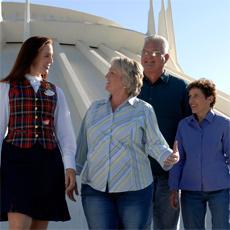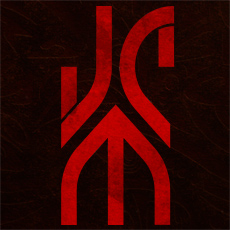A
Civil War veteran seeks his fortune in the California gold rush – and
ends up on a strange planet, surrounded by four-armed green warriors,
savage monsters, and fetching princesses. It's the plot of Edgar Rice
Burroughs' early science-fiction pulp classic "A Princess of Mars,"
which was penned nearly 100 years ago – and it's the basis for next
year's hotly anticipated film adaptation "
John Carter."
Eventually stretching to 11 books, Burroughs' Barsoom series (Barsoom
being the Martian name for Mars) captivated readers with nonstop
adventure and thrills, and set the stage for the epic science-fiction of
the 20th Century. The books have been wildly popular since their first
publication but have never been filmed – until now.
Director Andrew Stanton co-adapted the book to film and directed as well. The director of "
Finding Nemo" and "
WALL●E,"
Andrew gave us a tempting peek at world and peoples of Barsoom, and
talked about making Carter's mind-boggling voyage to Mars a story we
could believe.
Right off the bat, Andrew wants to get one thing straight – "Nobody's a
bigger fan of the books than I am!" He first discovered John Carter at
around age 10 through a short-lived Marvel comic-book adaptation, and
went on to devour the novels. And he wasn't alone – when the time came
to begin work on the script for John Carter, Andrew and his co-adapters,
Mark Andrews and Pulitzer-Prize winning novelist Michael Chabon, found
that each of them had loved Burroughs' John Carter books. In fact, each
had been so obsessed as a boy that he had drawn fan art inspired by the
books ... and could bring in the drawings to prove it!
That said, they all realized that bringing the story to the big screen
would involve a lot of adaptation to make a satisfying epic film. "I've
always treated [the creative process] like an archaeological dig –
stories are out there, and you just have to uncover them," says Andrew.
"You don't have a say about when you find a bone, or which bones you're
going to find. You have to face the music that you dug up a different
dinosaur than you thought, and are you going to have the intestinal
fortitude to admit that, instead of forcing it to be what you want. I
knew the book so well, and so did Mark and Michael, that we just looked
at it in a story analysis. This is the character's arc, and this is
where they have to go, so how do you make that work? I didn't let myself
look at the book, because I wanted to go 'What's best for this story,
this theme, this character line?' But I was shocked that when the script
was finished, I'd look back at the book and go 'I thought we came up
with that!' All the elements were there."
Asked whether his 12-year-old self, the one who loved the books and drew
the pictures, would like the film, he laughs, "The 12-year-old is so
easy to please! It's the nearly 50-year-old that has now seen way too
many movies and read way too many books – can I appease that person? I'm
always thinking, how can I not exclude anyone? How can I make this
satisfying on as many levels as possible?" And the key to that
satisfaction? Depth and realism, in both the characters and the world of
Barsoom.
To begin with, a few plot holes have been plugged. While in the books
Carter's mysterious journeys to Mars are never fully explained, Andrew
assures us that in the film there's a compelling reason why the hero is
drawn there – and no, he won't spill beans about what it is!
Also making Carter's adventure feel real is Stanton's insistence that
the actors playing the Tharks, the towering four-armed green-skinned
denizens of Barsoom, be present on-camera as their scenes were filmed,
rather than shooting their motion-reference work separately and splicing
the characters in later. (Since stars Willem Dafoe and Samantha Morton
have only two arms apiece and no tusks, their characters will be
computer-generated based on the actor's facial and body movements). To
give his Tharks the appropriate height and capture the nuances of their
expressions, the actors were placed on towering stilts on location in
the remote deserts of Utah and Arizona, with small cameras projecting in
front of their faces. Although it required real troupers to achieve,
the result is that the actors are directly reacting to each other's
performances ... and the human-sized cast always knew exactly where to
look and how to interact. Similarly, actors riding the mightly Thoats –
the beasts of burden and transport on Barsoom – were set on electrical
carts atop saddles programmed to move with the animals' own body motion,
creating a highly believable effect.
Finally, the world and artifacts of Barsoom were designed with an eye
toward the plausible. The great ruined Martian cities were not simply
matte paintings or computer models – the crew filmed actual natural rock
formations and layered the columns, pillars, and crumbling balconies of
Barsoom over them. The result is a solidity and realism that makes it
easily to believe we are seeing another world. The weapons, airships,
ornaments, and artifacts of the various Martian cultures were
meticulously designed to suggest a complexity that goes beyond the
adventure in the film – that these beings built complex cultures with
long histories, and we are being given a peek into simply one moment on
Mars. As Andrew explains, "It's like a period film from a period we just
don't know about!"
With the film still nearly a year away from release, much remains to be
done and there are many hurdles to cross before the finish line. But
Andrew is thrilled with film so far, and eager to take audiences to
Barsoom. "We only had one mantra: "Just keep it good." Everything else
will come. Really all you have control over is quality," he explains.
It's a hallmark of Disney's house style, and a valuable lesson to take
anywhere – including to the far reaches of Mars.












































